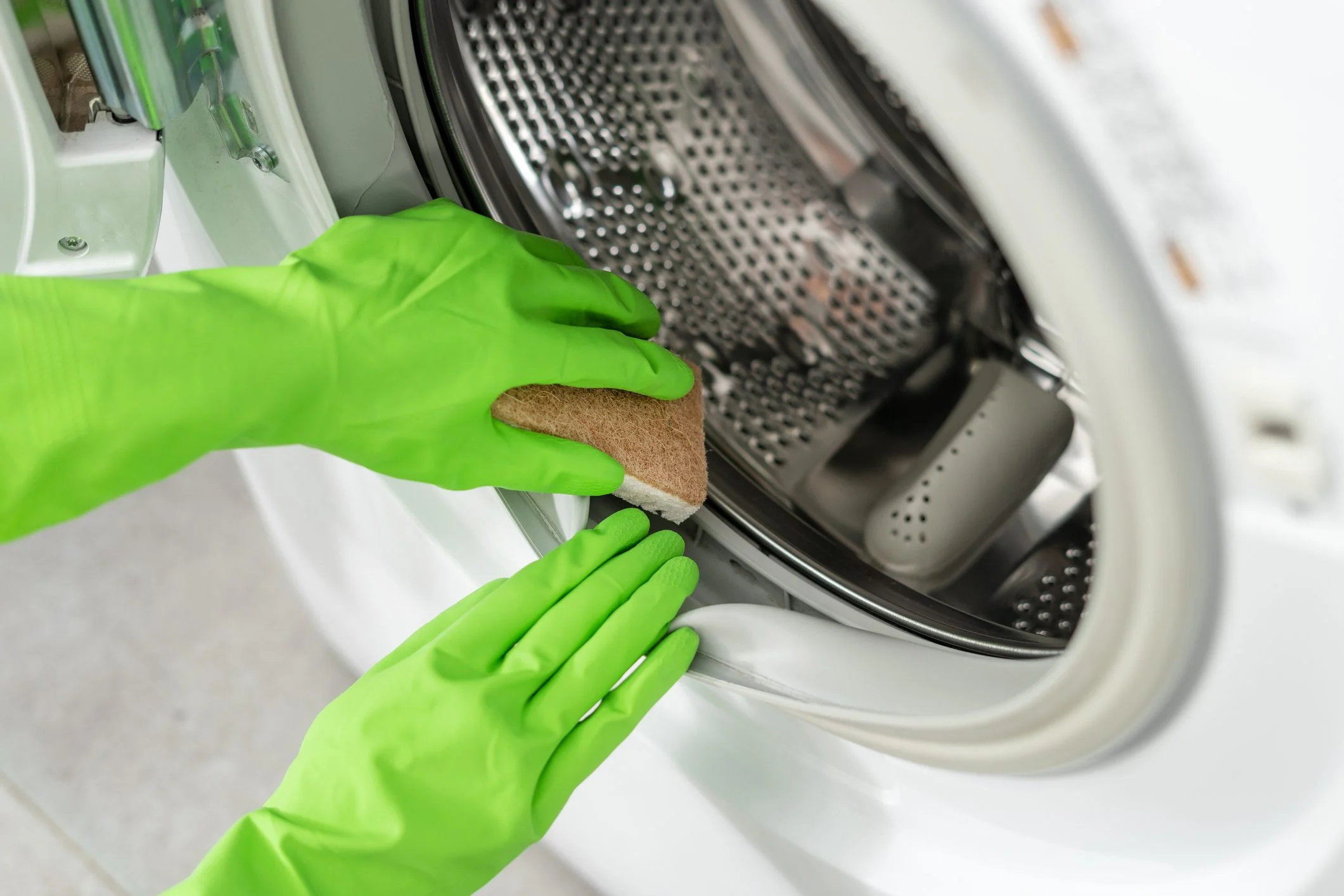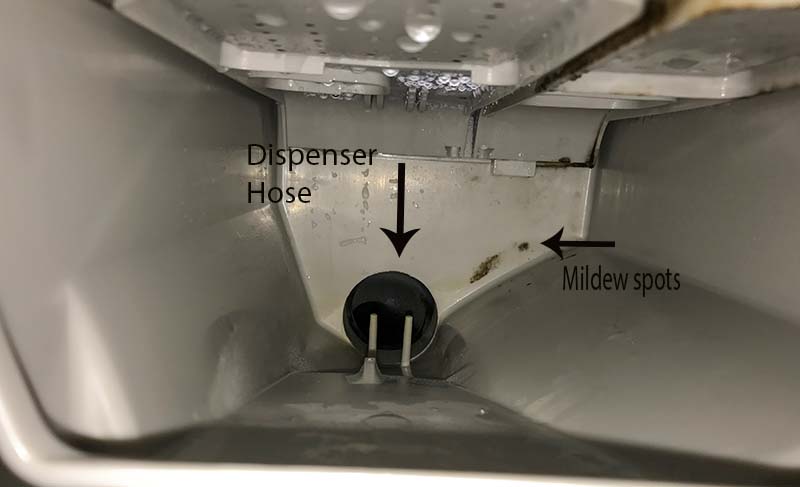
Why Does Mold Grow in Washing Machines?
Washing machines are constantly exposed to water, detergent residue, and humidity—creating the ideal environment for mold and mildew to thrive. Front-loading washing machines are especially susceptible to mold growth because they have airtight doors that trap moisture inside. Over time, this can lead to a buildup of mold around the rubber gasket (the seal around the door), inside the detergent drawer, and even in the drum itself.
According to the EPA, mold can cause respiratory issues, allergic reactions, and other health problems if left unchecked. That’s why it’s important to address any mold in your washing machine as soon as you notice it.
How to Remove Mold from Your Washing Machine

If you’ve noticed mold in your washing machine or musty-smelling laundry, it’s time to take action. Follow these steps to effectively remove mold from your machine and prevent it from returning:
| Step | How to Do It |
|---|---|
| 1. Clean the Gasket | The rubber gasket around the door of front-loading washers is a common spot for mold. Mix equal parts of water and white vinegar in a spray bottle, then spray the gasket thoroughly. Let it sit for 10-15 minutes, then scrub with a cloth or an old toothbrush to remove the mold. |
| 2. Clean the Detergent Drawer | Mold can also grow in the detergent drawer, especially if detergent or fabric softener residue builds up. Remove the drawer and soak it in a mixture of warm water and vinegar. Use a brush to scrub away any mold, then rinse and dry before putting it back. |
| 3. Run a Cleaning Cycle | Once the gasket and detergent drawer are clean, run an empty cleaning cycle to eliminate any mold inside the drum. Use two cups of white vinegar or a specialized washing machine cleaner and run the machine on the hottest setting. |
| 4. Wipe Down the Drum | After the cleaning cycle, wipe down the drum with a clean, dry cloth to remove any remaining moisture. Pay attention to any hard-to-reach areas where mold could still be hiding. |
| 5. Dry the Machine Thoroughly | After cleaning, leave the door of the washing machine open to allow the drum to air dry. This helps prevent moisture from becoming trapped inside, which could lead to future mold growth. |
Regular cleaning of your washing machine is essential to prevent mold buildup. If you’ve followed these steps and mold is still present, or if the problem keeps coming back, it might be time to call the experts at Citywide Mold Mitigation for a thorough inspection and professional mold removal services.
How to Prevent Mold in Your Washing Machine

Now that you’ve removed the mold, it’s important to take steps to prevent it from coming back. Here are some tips to keep your washing machine mold-free:
1. Leave the Door Open
After each load of laundry, leave the door of your washing machine open to allow the drum to dry out completely. Trapped moisture is one of the main reasons mold grows, so letting the machine air out between uses is essential.
2. Use the Right Amount of Detergent
Using too much detergent can lead to residue buildup, which can trap moisture and contribute to mold growth. Always follow the manufacturer’s guidelines for the correct amount of detergent to use, and consider switching to a high-efficiency detergent if you have a front-loading machine.
3. Run Regular Cleaning Cycles
To keep your washing machine clean and fresh, run an empty cleaning cycle once a month using white vinegar or a washing machine cleaner. This helps to remove any detergent residue, mold, and mildew that may be building up inside the machine.
4. Wipe Down Seals and Gaskets
After each load, wipe down the rubber gasket around the door to remove any moisture. Regularly cleaning this area helps prevent mold from growing in the first place.
5. Use a Dehumidifier
If your laundry room is particularly humid, using a dehumidifier can help reduce moisture levels and prevent mold from developing inside your washing machine. For more tips on controlling humidity, visit the CDC’s guide to mold prevention.
When to Call Citywide Mold Mitigation for Help
While DIY mold removal methods can be effective for minor mold problems, there are times when professional help is necessary. If mold growth in your washing machine is extensive, persistent, or causing health issues, it’s time to call the professionals.
Citywide Mold Mitigation offers expert mold removal services to ensure your home is safe and mold-free. Our experienced team can assess your washing machine and other areas of your home for mold growth, remove it safely, and provide tips to prevent it from returning. Contact us today for a free consultation and keep your home healthy.
FAQ
| Question | Answer |
|---|---|
| Why does my washing machine smell like mold? | Mold in your washing machine is usually caused by trapped moisture, detergent residue, and poor air circulation. Front-loading machines are particularly prone to this problem. |
| How do I remove mold from my washing machine? | To remove mold, clean the rubber gasket with vinegar, scrub the detergent drawer, run a cleaning cycle, and wipe down the drum. Leave the door open to air dry afterward. |
| Can mold in my washing machine make me sick? | Yes, mold can cause respiratory problems, allergic reactions, and other health issues, especially for those with pre-existing conditions. It’s important to remove mold as soon as you notice it. |
| How can I prevent mold in my washing machine? | Leave the door open after each use, use the right amount of detergent, run regular cleaning cycles, and wipe down seals and gaskets to keep mold at bay. |
| When should I call a professional for mold removal? | If mold growth is extensive, persistent, or spreading to other areas of your home, it’s best to call a professional like Citywide Mold Mitigation for thorough removal. |
If you’re dealing with mold in your washing machine or elsewhere in your home, don’t wait. Contact Citywide Mold Mitigation today for expert mold removal services and keep your home safe and clean.

